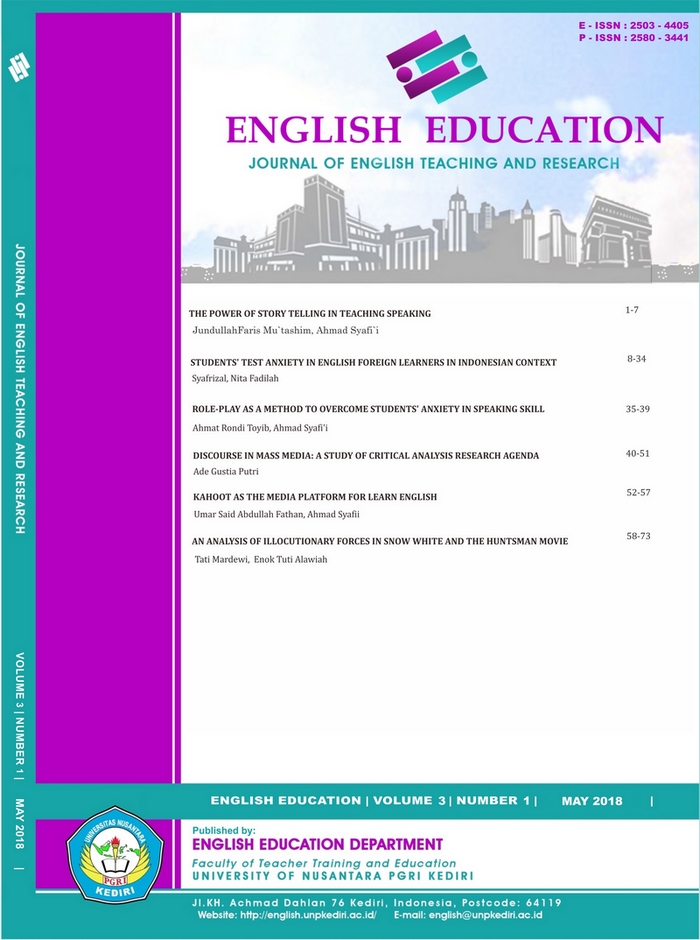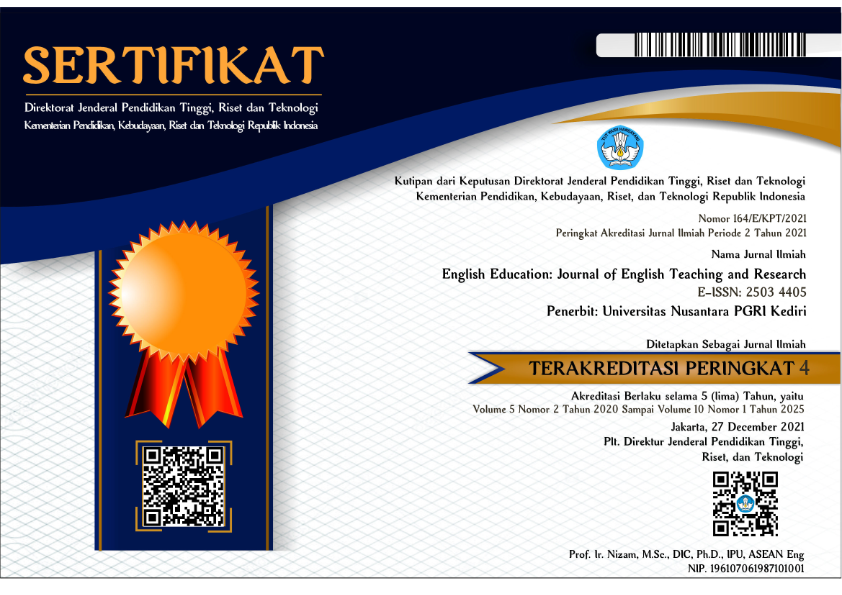AN ANALYSIS OF ILLOCUTIONARY FORCES IN SNOW WHITE AND THE HUNTSMAN MOVIE
DOI:
https://doi.org/10.29407/jetar.v3i1.12120Abstract
The aim of the analysis of illocutionary forces in snow white and the huntsman movie is to pertain the importance of knowing the real meaning and function behind utterances in the movie, it means this analysis help students get the ways how to comprehend other movies by this movie as an example. Illocutionary forces in SnowWhite and the Huntsman movie directed by Rupert Sanders with involving a study oflinguistic. This research is to answer what the illocutionary forces based on Searle's category are found in Snow White and the Huntsman movie directed by Rupert Sanders and what the dominant type is. Descriptive method is used in this research. There are twenty four data as substance to be analysed. The data are analysed using the theory of illocutionary forces based on Searle. The result indicates that there are five types of illocutionary forces based on Searle's category. There are assertives, directives, commisives, expressives, and declaratives. First is assertives, which occur four times. Second is directives, which occur eleven times. Third is commissives, which occur two times. Fourth is expressives, which occur six times. Fifth is declaratives, which occur one time. From these illocutionary forces, it shows that each type of illocutionary forces has different frequency of occurrence, which directives are the dominant type due to the condition of the palace in the movie. In the palace, there are various positions such as Queen, Princess, and the Huntsman. It is great possibility of them to get hearer to do something as what they want. All data has a meaning as substantiation for people that every utterances in a movie have its own function.
Keyword: Hearer, Illocutionary Forces, Speaker, Utterance
Downloads
Downloads
Published
Issue
Section
License
Authors who publish with this journal agree to the following terms:
- Copyright on any article is retained by the author(s).
- The author grants the journal, the right of first publication with the work simultaneously licensed under a Creative Commons Attribution License that allows others to share the work with an acknowledgment of the work’s authorship and initial publication in this journal.
- Authors are able to enter into separate, additional contractual arrangements for the non-exclusive distribution of the journal’s published version of the work (e.g., post it to an institutional repository or publish it in a book), with an acknowledgment of its initial publication in this journal.
- Authors are permitted and encouraged to post their work online (e.g., in institutional repositories or on their website) prior to and during the submission process, as it can lead to productive exchanges, as well as earlier and greater citation of published work.
- The article and any associated published material is distributed under the Creative Commons Attribution-ShareAlike 4.0 International License








 Article template
Article template



